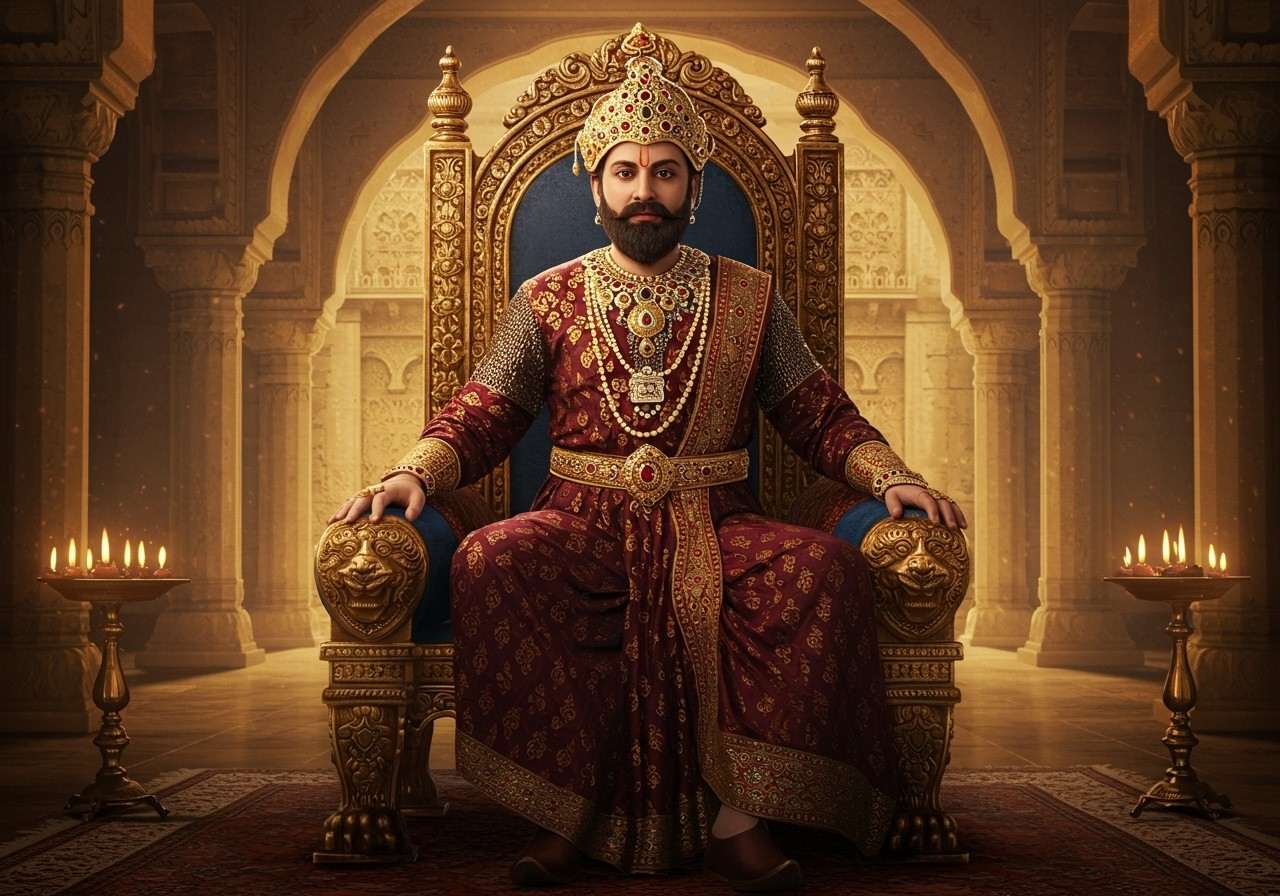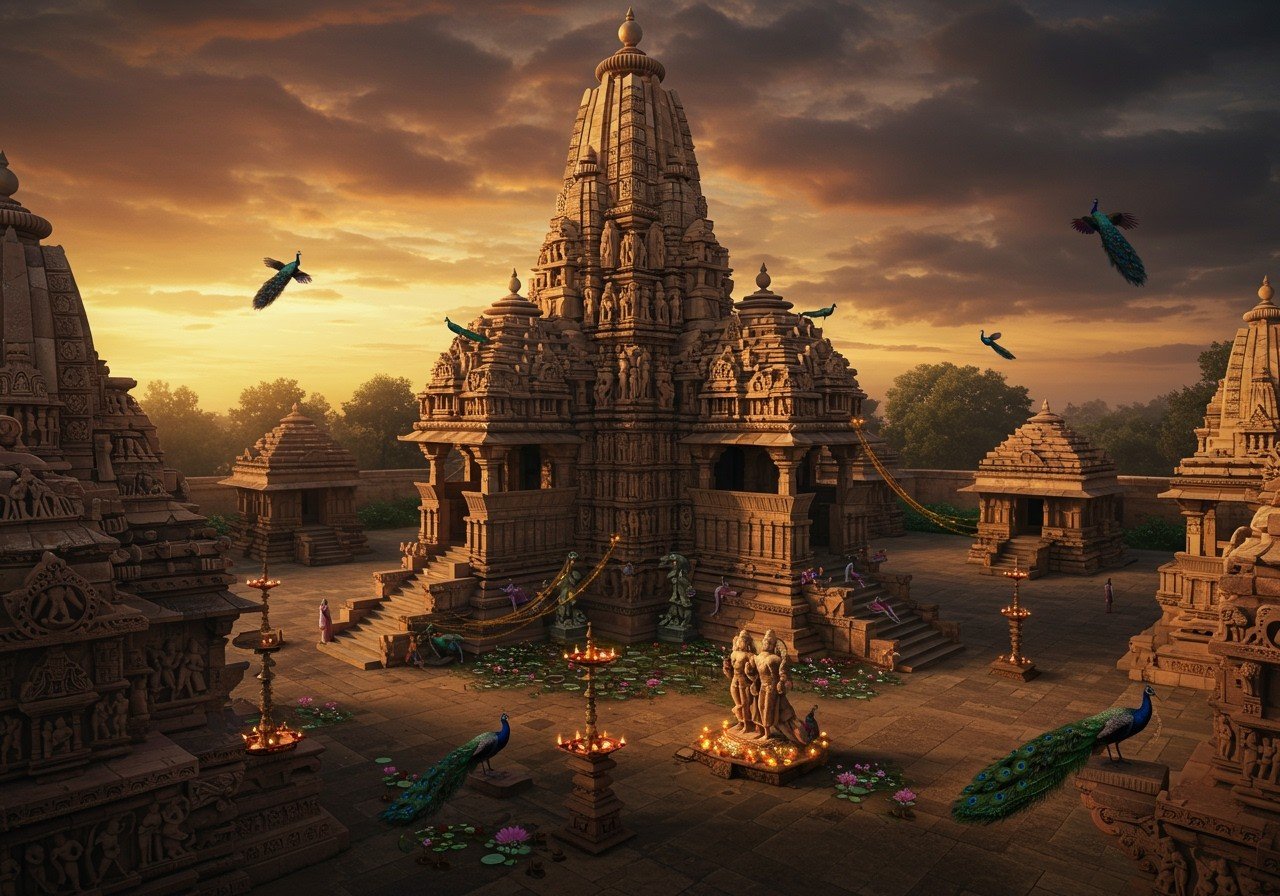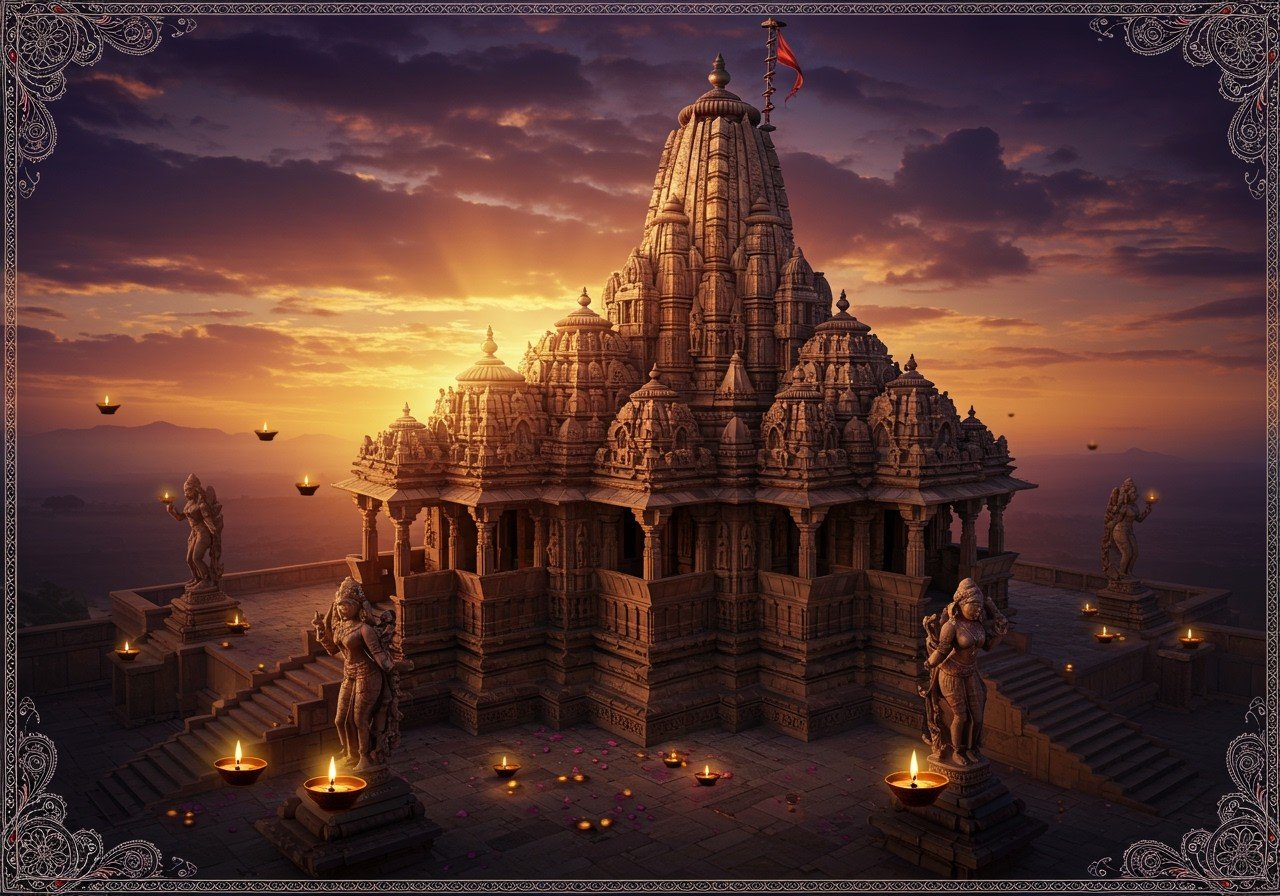
Come, let’s journey back in time, to an era of magnificent temples, valiant kings, and a flourishing culture that is the very soul of our Bharat. Today, we’ll talk about the Chaulukya dynasty, a name that resonates with strength and artistry in Western India. In this glorious lineage, one king shines particularly bright: Kumarapala (reigned 1143–1172 CE). His life is a captivating story of struggle, strategic genius, and a deep commitment to Dharma and culture, a story that every Indian should know and feel proud of.

The Golden Age of the Chaulukya (Solanki) Dynasty
Before we dive into Kumarapala’s life, it’s important to understand the world he was born into. The Chaulukya dynasty, also lovingly known as the Solanki dynasty, ruled over large parts of what we now call Gujarat and Rajasthan from around 940 CE to 1244 CE. This wasn’t just a time of kings and battles; it was an era of incredible prosperity. Trade routes buzzed with activity, cities grew, and agriculture thrived, filling the kingdom’s coffers and the people’s homes with abundance.
But more than anything, it was a time of immense faith. Hinduism and Jainism coexisted beautifully, and the rulers were great patrons of both. This harmony and devotion gave rise to some of India’s most breathtaking architectural wonders. The very air was thick with spirituality and creativity, setting the perfect stage for a king like Kumarapala to leave his mark.
From Exile to the Throne: Kumarapala’s Inspiring Journey
Kumarapala’s early life was anything but easy. As a descendant of the great king Bhima I, he had a rightful claim to the throne, but this also put him in great danger. His own relative, the powerful ruler Jayasimha Siddharaja, saw him as a threat. To save his life, Kumarapala had to spend many years in exile, living like a common man, far from the comforts of the palace. This period of hardship, however, shaped him into a resilient and wise man.
His moment arrived with Jayasimha’s death. How did Kumarapala come to power then? With clever planning and the crucial support of his brother-in-law, he returned to the capital, Anahilapataka (modern-day Patan), and claimed the throne that was rightfully his. This wasn’t just a change of ruler; it was the beginning of a new chapter of stability and glory for the kingdom.

A Visionary Ruler: Military Strength and Wise Governance
As a king, Kumarapala proved his mettle on the battlefield time and again. He was not just a warrior but a brilliant strategist. He led successful military campaigns against neighbouring rulers, including the Chahamana king Arnoraja and the Shilahara king Mallikarjuna. He decisively defeated King Ballala and annexed the entire Malwa region, expanding his empire’s borders. By 1151, his authority was so firm that even the historic fortress of Chittor was under his control.
His reign brought a sense of security and peace to the people, allowing trade and culture to flourish without fear. This period of stability is one of Kumarapala’s major achievements, creating an environment where his kingdom could truly prosper.
A Legacy of Faith, Art, and Culture
While born into a Shaivite family, Kumarapala’s heart was deeply moved by the teachings of Jainism later in his life. His embrace of Jainism had a profound impact on Gujarat. Jain traditions tell us he promoted ahimsa (non-violence) so strongly that he put restrictions on animal slaughter. Though royal inscriptions don’t explicitly confirm these prohibitions, his deep devotion is undeniable.
What makes Kumarapala’s rule truly significant was his religious tolerance. He was a great patron of arts and architecture, generously funding the construction and restoration of numerous temples for both faiths. He famously rebuilt the sacred Somnath-Patan tirtha site, a place of immense emotional and spiritual importance for us. The exquisite Maru-Gurjara style of architecture reached its zenith under his patronage. This beautiful confluence of faith and art is a core part of our identity.
This deep-rooted connection to our sacred spaces and traditions is something we at Poojn.in cherish deeply. If you wish to bring a piece of that divine artistry and devotion into your home, consider exploring our exquisite collection of holy idols and traditional decorative items that echo the grandeur of that golden age.
The Timeless Legacy of a Great King
So, how is Kumarapala remembered today? He is remembered as a wise, just, and powerful ruler who masterfully balanced military expansion with cultural and spiritual development. His reign was a period of economic growth and cultural blossoming that made the Chaulukya dynasty a formidable power in India. He wasn’t just a conqueror; he was a creator, a patron, and a protector of Dharma.
His story teaches us about resilience, the importance of faith, and how true leadership lies in creating a society where culture and prosperity can go hand-in-hand. His contributions continue to echo in the magnificent temples that still stand today and in the rich cultural fabric of Gujarat.
Connect with Our Glorious Past Through Poojn.in
Exploring the life of a great king like Kumarapala fills our hearts with pride and inspiration. At Poojn.in, we are committed to helping you connect with this rich heritage in a meaningful way.
- Embrace Our Traditions: The devotion that built the great temples of Kumarapala’s time can be felt in our own daily rituals. For all your pooja needs, from yajnas to daily prayers, you can find authentic and pure pooja samagri online, ensuring your connection with the divine is always strong.
- Adorn Your Sacred Spaces: Bring home the beauty of our traditions with items that reflect our cultural pride. Whether it’s a beautiful dress for your Gopal idol or other culturally significant items, we help you keep the flame of tradition alive in your home.
For any guidance or to explore our offerings, feel free to call us at 03369029784 or send a message on WhatsApp at 9476142738. We are here to serve your cultural and spiritual needs.
Conclusion: A King to Remember, An Era to Cherish
Kumarapala’s journey from a life in exile to becoming one of the most respected kings of the Chaulukya dynasty is more than just a historical account. It is a powerful reminder of the strength of the human spirit and the enduring power of faith and culture. His legacy is etched in stone in the temples he built and in the hearts of the people who continue to draw inspiration from his just and prosperous rule. Let us remember and celebrate such great leaders who have shaped the very soul of our incredible nation.


